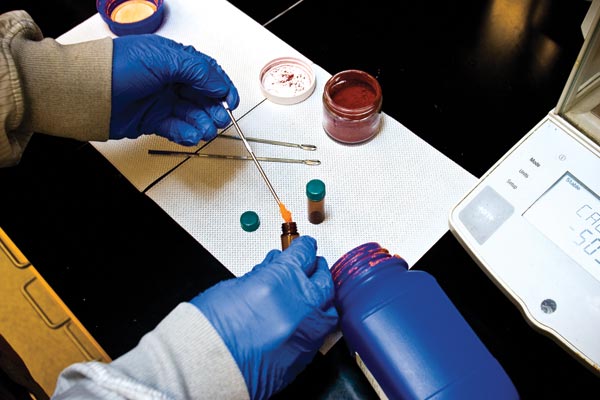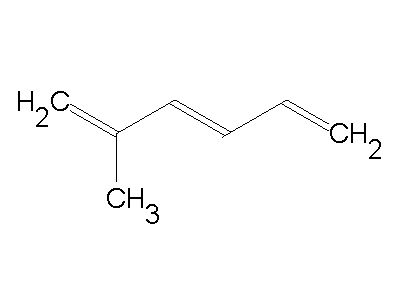This material is aimed at employees who are exposed to solvents at work. It gives important advice about the precautions that employees and their employers should take to avoid risks to the health of workers who use solvents and products that contain solvents. Exposure to solvents can affect your health in many ways. In some circumstances, the effect can be very serious. Please take the time to read this.
How can solvents get into my body?
• If you breathe in vapours and fumes.
• If they come into contact with your skin, either directly or through solventcontaminated work clothes, and get absorbed.
• If you swallow liquid solvents. How can solvents affect my health? Short-term effects Different solvents can affect your health in different ways.
Some of the short-term effects are:
• irritation of eyes;
• irritation of lungs;
• irritation of skin (dermatitis);
• headache;
• nausea;
• dizziness;
• light-headedness.
When you are exposed to solvents, your co-ordination may become impaired, which may increase your chance of having an accident. Unconsciousness and even death can result from exposure to high concentrations of solvent vapours.
Long-term effects
Repeated exposure to solvents can have long-term effects on your health. These may include dermatitis. Other possible effects on health vary according to which solvent you are exposed to.
What precautions should I take?
In general
• The more you know about solvents and the sensible precautions you should take, the safer you will be. That’s why getting information and training is so important.
• Make sure your employer provides you with details of the hazards of the particular solvents you use, the precautions to take when you use them, and the procedures to follow in an emergency.
• Read the supplier’s safety data sheets and container labels and follow their advice.
• Ask your employer for clarification if you need to.
• Ask if solvent-free materials, safer solvents or materials with a reduced solvent content can be used. Health and Safety Executive Working with solvents: A guide to safe working practices Page 3 of 5 Control of vapours
• Make full use of any local exhaust ventilation (LEV) your employer provides to remove vapours from your work area. • Report to your employer any damaged or defective ventilation plant or personal protective equipment (PPE).
• Wear any respiratory protective equipment (RPE) which your employer provides. Keep all protective equipment in a clean place. Make sure it is kept clean so it is fit to use.
• Make the most of natural ventilation, where appropriate, by opening doors and windows.
• Prevent unnecessary evaporation of solvents by using the minimum amount for the job, keeping lids on containers and using sealed containers for solventcontaminated waste.
• Do not leave solvent-contaminated rags lying around. Dispose of them in closed containers.
Skin contact
Avoid skin contact by:
• using paint scrapers to remove paint instead of solvent-based paint stripper;
• using water-based paints rather than solvent-based ones;
• using engineering controls, eg LEV captures airborne contaminants, preventing them from landing on the skin or onto surfaces that can come into contact with the skin;
• using automated handling, or using tools rather than hands;
• using procedural controls, eg barriers or splashguards, and restricting access;
• wearing suitable PPE (gloves, apron, goggles or face shield etc), where necessary;
• making sure that PPE is regularly checked and replaced, if necessary. Do not use solvents to remove paint, grease etc from your skin. There is further information at www.hse.gov.uk/skin/professional/managerisk.htm. Working in confined spaces In a confined space like a tank, pit, small room or inside a vehicle, solvent vapours cannot escape easily and dangerous – even fatal – concentrations can build up very quickly. A build-up of vapours and gases could be poisonous, explosive or flammable. Vapours can also displace air and cause asphyxiation.
Firstly, your employer should check if work can be done in another way so you can avoid entering or working in confined spaces. Where work in a confined space is unavoidable, you must follow a safe system of work, with adequate emergency arrangements in place:
• Do not use any materials containing solvents unless the area is adequately ventilated and, where necessary, you are provided with suitable respiratory protection.
• Do not enter a confined space where there may be solvent vapours, unless you or your employer has ensured that it is safe to do so – eg the space has been ventilated and the atmosphere tested – or unless special precautions are taken. Health and Safety Executive Working with solvents: A guide to safe working practices Page 4 of 5 Other precautions
• Wash thoroughly after working with solvents and before eating or smoking.
• Do not eat or smoke in areas where there are solvents.
• Do not smoke, weld, burn or use any naked lights in areas that may contain the vapour of chlorinated solvents as very toxic gases may be given off.




